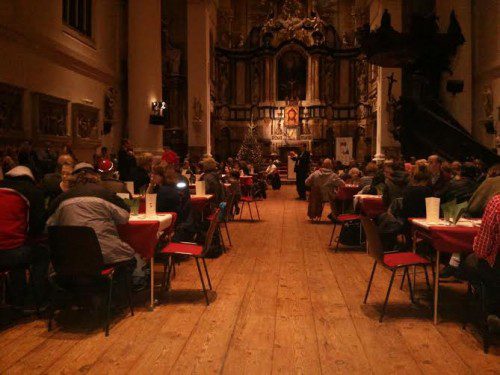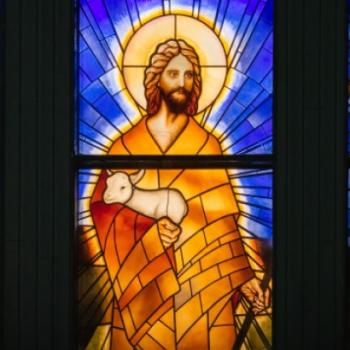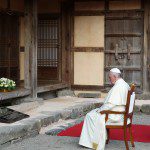
First in a series of looks at the works of the Community of Sant’Egidio, in Europe. In the US, the Community of Sant’Egidio can be found in New York, Boston, and Washington DC.
by Zeger Polhuijs
This past Christmas season, the cosmopolitan city of Amsterdam saw another way of celebrating Christmas in the festivities of the Community of Sant’Egidio. An hour after evening mass, the doors of the Moses and Aaron Church were opened to receive about 70 guests, mostly homeless, at well-decorated dinner tables set up in the church for the occasion. With the recently reopened and reconsecrated Moses and Aaron Church at their disposal, the Community of Sant’Egidio is offering people another way of being Catholic in the nation’s capital.
Since its humble beginnings in 1968 in Rome, the international Community of Sant’Egidio has spread its two-fold message of prayer and friendship with the poor throughout the world. In addition to its community prayer featuring Byzantine melodies and meeting the poor, the homeless, the elderly and the marginalized, Sant’Egidio has championed interreligious encounters for peace, abolition of the death penalty, and high-quality care for AIDS victims in Africa. It has also been involved in the negotiations which led to the end of the civil war in Mozambique in 1992.
Inspired by the nearby city of Antwerp — where the community runs a restaurant for the homeless and a small-scale elderly home — Sant’Egidio spread to the Netherlands some time ago, and has seen a modest but remarkable growth in recent years. In September 2014 the Moses and Aaron church was reopened and reconsecrated after not having been used as a Roman Catholic church for over three decades. A sign of the newfound confidence of Catholics in Amsterdam, which is usually known for being thoroughly secularized, the church was given to the care of the Community of Sant’Egidio, giving it a firm presence in the city centre.
In this church building, the community in Amsterdam has added to its existing repertoire (of prayer, meeting the homeless on the street, and visiting the elderly) a Sunday mass, a weekly meal for the homeless and a children’s club in a nearby neighbourhood. The group of regulars is still small, but grew providentially when it expanded its activities.
Throughout the world, the Community of Sant’Egidio is enjoying an exciting season as it sees its dearest values exemplified in Pope Francis. His challenge to the Church — to be ‘bruised, hurting and dirty because it has been out on the streets’ rather than ‘unhealthy from being confined and from clinging to its own security’ (Evangelii Gaudium 49) — strikes at the heart of being Catholic in the Sant’Egidio fashion. It is the invitation to find joy in living the gospel, both inside and outside the church building, and the challenge of being connected to the Church’s centre while maintaining a lively presence in the world’s peripheries.
In Amsterdam, the Community of Sant’Egidio continues its Christmas feast of friendship with the poor. Gathered in prayer, or during Mass, they gaze on the icon of the face of Jesus, who is encountered both inside the church building as well as outside on the streets, in the face of the poor. It has been a humble and fragile beginning, but in these glimpses of joy amid a growing community, we see a promise of possibilities, and are encouraged as to what putting the Pope Francis revolution into practice might look like.
 Zeger Polhuijs is a Dutch student and Catholic blogger, and involved with the Community of Sant’Egidio in Amsterdam. Over the next months he will conduct fieldwork in the Sant’Egidio Communities in Rome, Antwerp and Amsterdam for his thesis research.
Zeger Polhuijs is a Dutch student and Catholic blogger, and involved with the Community of Sant’Egidio in Amsterdam. Over the next months he will conduct fieldwork in the Sant’Egidio Communities in Rome, Antwerp and Amsterdam for his thesis research.
Related:
Pope Benedict XVI visits elderly group ministered to by the Community of Sant’Egidio
Pope Francis Visits Community of Sant’Egidio













